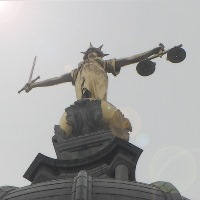Laws regarding driving under the influence of alcohol, drugs or other narcotics can be found on the books of nearly every state in the U.S., including the District of Columbia and the U.S. Virgin Islands. These laws seek to curb the dangers associated with operating a motor vehicle while intoxicated or otherwise impaired.
While most people believe that DUI and DWI (driving while intoxicated) statutes only apply to operators of motor vehicles, many states consider bicyclists to be “motorists.” This means that the statutes for DUI in these states apply as much to bicyclists as they do to operators of motor vehicles. The standard applied in a particular state depends on whether or not the state has a specific law for “biking under the influence,” or BUI, or if the standards of the state’s DUI statutes apply equally.
Here are a few BUI cases that have determined the interpretation of DUI/DWI statutes as it relates to impaired bicycling.
Everton v. District of Columbia, 993 A. 2d 595 (D.C. Ct. of App 2010)
In January 2007, bicyclist Baker N. Everton of Washington, D.C., was found by officers of the city’s Metropolitan Police Department (MPD) at 7:45PM to be intoxicated and standing next to his bicycle. When asked to move along and not to ride his bike, Mr. Everton, as reported by officers, began to proceed up the road on his bike, nearly hitting a young pedestrian. The MPD officers on the scene arrested Mr. Everton and placed him in custody for violating the District’s Traffic Act (of 1925) with respect to driving a vehicle while under the influence of an intoxicant.
Everton’s attorney argued that the DUI statutes did not apply to this situation since Everton was on a bicycle and not a motorized vehicle. The Court of Appeals rejected that argument and upheld the conviction under the city’s DUI laws.
State (South Dakota) v. Bordeaux, 710 NW 2nd 169 (SD Supreme Court 2006)
Gerald Bordeaux of Sioux Falls, South Dakota, was seen by a pedestrian falling off his bicycle in the afternoon of October 4, 2004, after leaving a friend’s home with a blood alcohol level of 0.225. Mr. Bordeaux was arrested and charged with operating a vehicle while intoxicated, in violation of SDCL 32-23-1(2).
Bordeaux argued before the court that the evidence against him was insufficient to support his conviction for DUI, claiming he lacked physical control of the vehicle and that his bicycle was not a vehicle. The Supreme Court for South Dakota upheld his conviction, stating that although the specific language “bicycle” is not contained in the statute, a bicycle meets the definition as construed by the legislature.
City of Montesano v. Wells, 902 P. 2d 1266 (Washington Court of Appeals, 2nd Div. 1995)
The case of Montesano v. Wells differs from the previous two cases in that the court ruled that the statutes were not construed to include bicycles as motor vehicles.
Daniel Wells was observed on June 14, 1992, by a Montesano city police officer; he was swerving and making wide turns on a city street with his bicycle. The officer, smelling alcohol on his breath, administered several field sobriety tests, some of which Wells failed. He placed him under arrest for DWI. Although his appeal to a prior court failed, the Court of Appeals reversed the conviction, stating that the legislature never meant to include bicycles in the state’s DUI laws.
Byline
Oliver Fleming is a freelance legal blogger and writer who specializes in Bicycle Accidents and Criminal Defense.
No related posts.

